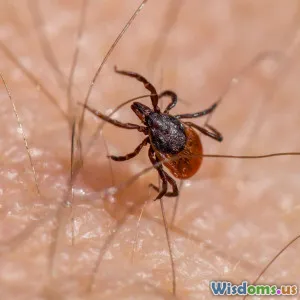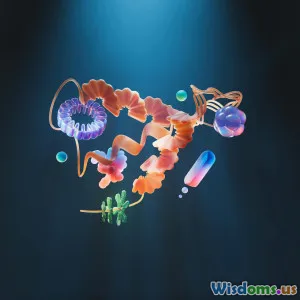
Should You Worry About Superbugs Crossing From Animals To People
7 min read Explore the threat of superbugs jumping from animals to humans and what it means for global health. (0 Reviews)
Should You Worry About Superbugs Crossing From Animals To People?
In recent decades, the term "superbugs" has surged from scientific circles into public consciousness, bringing alarming images of untreatable infections and increasing antibiotic resistance. But a critical question remains: do these dangerous bacteria originate solely in hospitals and human communities, or could another source be undermining our defenses? A growing body of research suggests that animals—both agricultural and wild—might be breeding grounds for antibiotic-resistant microbes that can jump to humans. This article explores this complex interplay between animals and people, assessing what superbugs are, how they might cross species, the real-world evidence, and what you should know to stay informed and proactive.
Understanding Superbugs: What Are They?
Superbugs refer to bacteria strains that have evolved to withstand conventional antibiotics, rendering many treatments ineffective. These resistant bacteria challenge modern medicine, leading to increased morbidity, mortality, and healthcare costs.
A prime example is Methicillin-resistant Staphylococcus aureus (MRSA), notorious for hospital outbreaks but now also detected in communities and livestock. Another is carbapenem-resistant Enterobacteriaceae (CRE), labeled "nightmare bacteria" by the CDC due to its resistance and fatality rates.
Antibiotic resistance occurs naturally through mutation and selection, but overuse and misuse of antibiotics in humans and animals accelerate the process. Farming practices have received particular scrutiny for contributing to this problem.
How Do Superbugs Jump from Animals to People?
The Pathways of Transmission
Zoonotic transfer, or pathogen transmission from animals to humans, is not new. Viruses like COVID-19 and influenza have animal origins, and bacteria can behave similarly. Here are the main routes:
- Direct Contact: Farmers, veterinarians, and pet owners can acquire resistant bacteria through handling animals.
- Food Consumption: Consuming improperly cooked or contaminated meat can transmit resistant bacteria.
- Environmental Spread: Animal waste containing superbugs can contaminate soil, water, and crops.
Role of Antibiotic Use in Animals
Globally, an estimated 73% of all antibiotics sold are used in livestock to promote growth and prevent disease in crowded conditions. Such chronic exposure creates perfect breeding grounds for resistant strains to develop.
For instance, Escherichia coli strains resistant to multiple antibiotics have been isolated from poultry and swine farms, some of which mirror strains found in nearby human populations.
Real-World Evidence: Cases Connecting Animal and Human Superbugs
Livestock-Associated MRSA
Studies in Europe and North America have identified livestock-associated MRSA (LA-MRSA), especially ST398, colonizing pigs and transmitted to workers on farms. Upon infection, these bacteria cause aggressive soft tissue infections and bloodstream infections that are hard to treat.
A 2017 Dutch study revealed that around 39% of pig farmers tested positive for LA-MRSA, a staggering indication of transmission risk.
Resistant Salmonella and Campylobacter
Foodborne pathogens, such as Salmonella and Campylobacter, often demonstrate resistance due to antibiotic pressures on farms. According to the US CDC, resistant non-typhoidal Salmonella causes over 100,000 infections annually, many linked to animal agriculture.
Outbreaks involving multidrug-resistant strains have triggered recalls and public health alerts, reinforcing the link between farming practices and human health.
What Are Health Authorities Doing?
Policies and Regulations
Acknowledging the risks, many countries are tightening antibiotic use in agriculture. For example, the European Union banned antibiotics for growth promotion in 2006; the U.S. FDA also enhanced rules requiring veterinary oversight.
Surveillance Programs
Global initiatives like the WHO's Global Antimicrobial Resistance Surveillance System (GLASS) monitor resistance patterns in humans and animals to guide responses.
One Health strategies, integrating human, animal, and environmental health sectors, gain momentum as systemic approaches to tackling antimicrobial resistance.
What You Can Do to Reduce Risk
- Practice Safe Food Handling: Cook meat thoroughly, wash hands, and avoid cross-contamination.
- Support Responsible Farming: Choose products labeled antibiotic-free or raised with responsible practices.
- Advocate for Policies: Encourage local and national support for stricter antibiotic regulation in agriculture.
Healthcare providers emphasize that individual actions alone cannot stop superbugs, but collective awareness and behavior changes matter.
Conclusion: Should You Worry?
Yes—and no. For the average person, worrying may not be productive, but understanding the risks posed by superbugs crossing from animals to humans is vital. The evidence is undeniable: antibiotic resistance is a multifaceted problem driven in part by animal antibiotic use, and these resistant bacteria do make their way into human populations.
However, this challenge also offers an opportunity. Advancements in surveillance, improved farming practices, regulatory changes, and public awareness campaigns are turning the tide.
Ultimately, protecting human health requires a comprehensive One Health approach that acknowledges the interconnectedness of animals, people, and their shared environment. By staying informed, supporting sustainable agriculture, and demanding prudent antibiotic use, we all can play a role in combating the superbug threat.
Author's note: For more information on antimicrobial resistance and how to contribute to mitigating this global problem, visit the World Health Organization's website on antibiotic resistance.
Rate the Post
User Reviews
Popular Posts





















